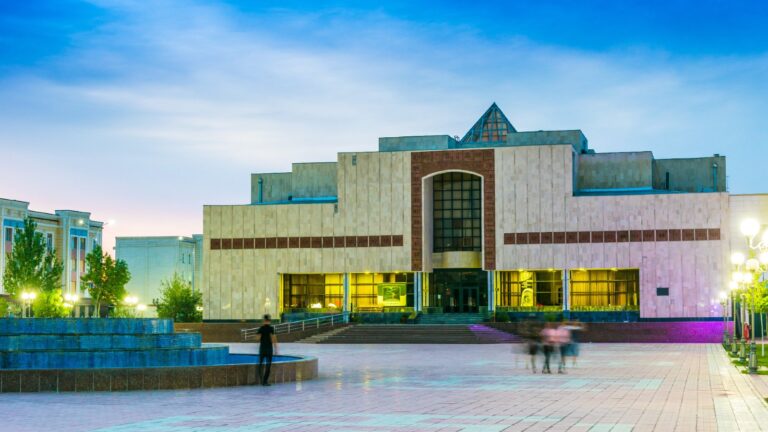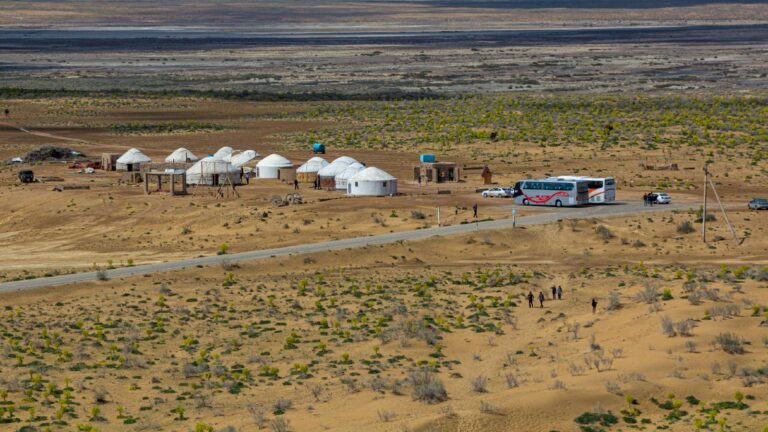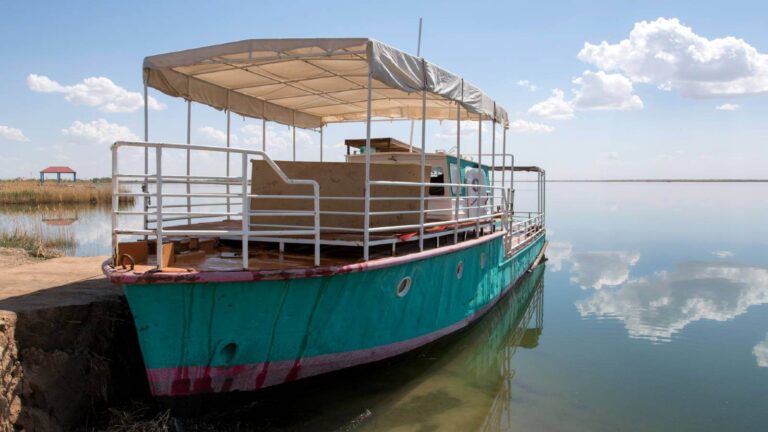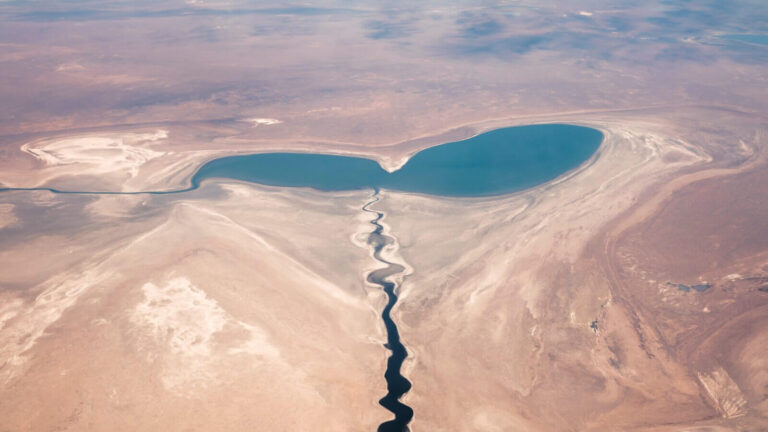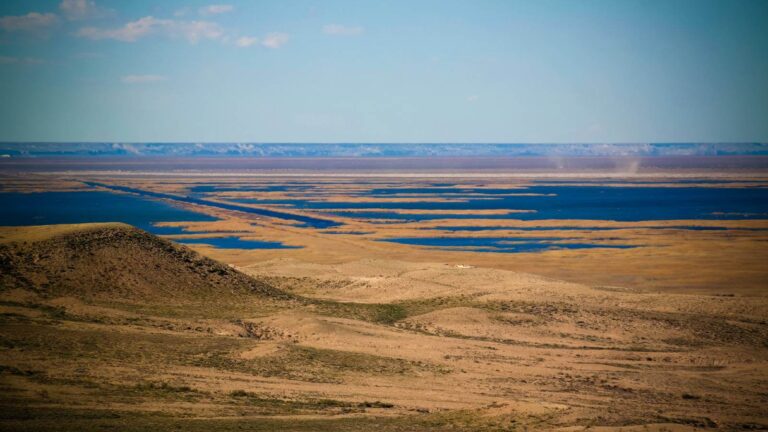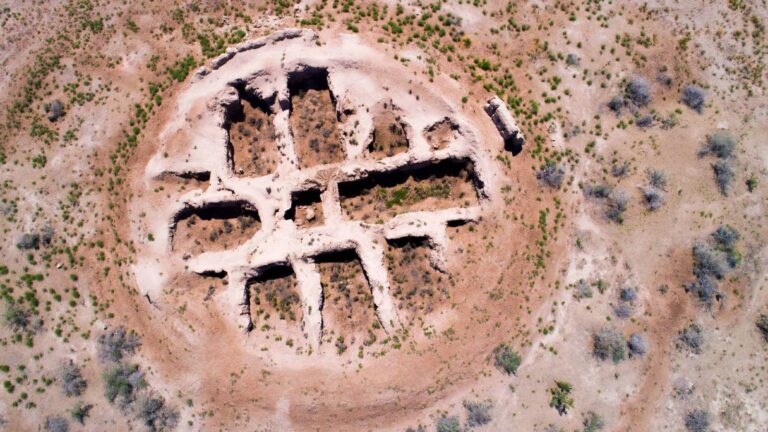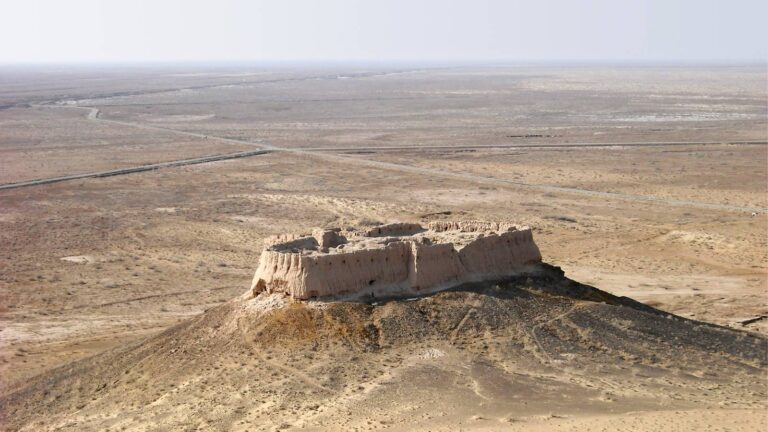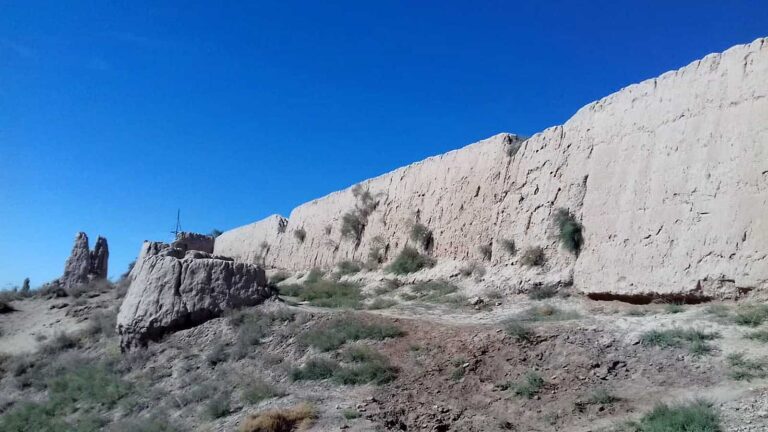Getting There
Bus,car
What to Expect
Kyzyl Qala is one of the castles in the Golden Ring of Khorezm, located along the Amu Darya river. The castle’s modest yet magnificent appearance, surrounded by irrigation channels and aged mud walls, adds to its mysterious and sandy charm.
The historical significance of Kyzyl Qala lies in its connection to the ancient civilization of Khorezm, known for its advanced irrigation systems and strategic location along the Silk Road. The castle’s remote setting amidst vast fields and the striking silhouette created by the poplar trees against the sky evoke a sense of wonder and transport visitors to a bygone era of desert kingdoms and nomadic tribes. Exploring Kyzyl Qala allows one to immerse themselves in the rich history and captivating landscapes of this lesser-known region of Central Asia.
History
Initially the Kizil-kala Fortress was built in the late antiquity period (I–IV centuries A.D.) but after some time became derelict. It was restored again in the XII–XIII centuries on the threshold of the Mongol invasion.
Some scientists suggest that the Kizilkala Fortress was used as garrison barracks for military troops or as a landlord’s reinforced mansions typical of early medieval Khorezm. The inner side of the Kizil-kala Fortress is well preserved. Tourists who visit its beautiful sites first enter into the second floor.
Inquisitive locals often penetrated the basement of the fortress on their hands and knees hoping to find gold. However, most of the time they only ran into snakes, which sought shelter from the burning sun. This sparked a legend that the area below the fortress is full of gold but no one can retrieve it, because it is protected by a huge snake or a demon.
Facilities Available
Information board (including foreign languages).

